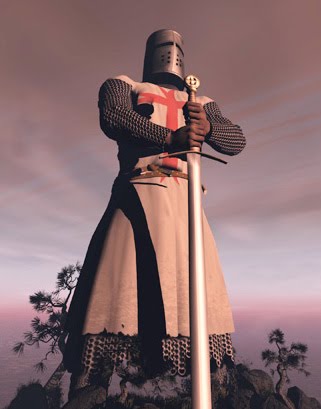
A Brief History of the Rosary (Catholic.com)
Over a hundred years of spiritual turmoil and civil unrest had ravaged the twelfth-century French countryside. Heretics’ rejection of marriage in particular had torn apart families and fostered vice. Dispatched on an urgent mission by the Spanish king, a young priest named Dominic Guzman (1170–1221) was moved by the suffering of the ordinary people he encountered on his journey.
Over a hundred years of spiritual turmoil and civil unrest had ravaged the twelfth-century French countryside. Heretics’ rejection of marriage in particular had torn apart families and fostered vice. Dispatched on an urgent mission by the Spanish king, a young priest named Dominic Guzman (1170–1221) was moved by the suffering of the ordinary people he encountered on his journey.
Pious legend holds that the Blessed Mother appeared to Dominic in a dream. She gave him the beaded chain on which the prayers of the rosary were to be recited and told him that prayer and meditation on the life of her Son would defeat heresy.
Although this legend is a lovely story, the development of the rosary is more complex. According to a recent interview he gave Zenit news agency, Fr. Ennio Staid, a Dominican theologian and expert on the subject, said Mary’s Psalter predated Dominic, though he and the Dominicans became its principal promoters.In its history of the rosary, The Catholic Encyclopedia (vol. 13, p. 184–189) recounts that in the early centuries of the Church monks would recite the Psalms as part of their rule of life. Since learning the Psalms was necessarily restricted to those who could read, a simpler prayer tradition was needed for the illiterate brothers. The Lord’s Prayer was adopted for this purpose; the brothers would recite 150 Our Fathers to correspond to the number of Psalms.
Small stones were used originally to count the prayers. Later, beads were strung as prayer counters. In the early part of the second millennium, with the rise of widespread medieval devotion to the Blessed Mother, the Hail Mary developed and gained popularity and was inserted into the prayer tradition. (See The New Catholic Encyclopedia, vol. 12, pp. 667–670).
During the twelfth century the praying of the Hail Mary spread in the West. Gabriel’s annunciation to Mary was, until the seventh century, the antiphon of the offertory of the fourth Sunday of Advent, a Sunday with particular Marian significance. At that time the Hail Mary ended with "blessed is the fruit of they womb." The name Jesus and the second part—"Holy Mary, Mother of God . . ."—were introduced around 1483.
Between 1410 and 1439, Dominic of Prussia, a Cologne Carthusian, proposed to the faithful a form of the Marian Psalter in which there were 50 Hail Marys, each followed by a verbal reference to a Gospel passage. The Carthusian’s idea caught on, and psalters of this type multiplied in the fifteenth century. The references to the Gospel grew numerous, at one point reaching 300, according to the regions and favorite devotions.
Dominican Alain de la Roche (1428–1478) did a great work in promoting the Marian Psalter, which during his lifetime began to be called "Rosary of the Blessed Virgin Mary," thanks to his preaching and to the Marian confraternities he founded. The rosary was simplified in 1521 by Dominican Alberto da Castello, who chose 15 evangelical passages for meditation, which included the short prayer at the end of the Hail Marys. The final, traditional form was standardized during the pontificate of one of Dominic’s spiritual sons, Pope St. Pius V (1566–1572).
A wide variety of prayer traditions have been attached to the rosary. The Franciscans developed their own form, which has survived into our time. The faithful have added other prayers to the traditional form. In the U.S., the rosary usually begins with the Apostles Creed, while in other parts of the world it opens with Psalm 70. In some places, since the apparitions at Fatima, Portugal, in 1917, the prayer that our Lady is believed to have taught the young seers has been added after the concluding Gloria of each decade. Some end the rosary with the prayer Hail, Holy Queen; others add Pope Leo XIII’s prayer for protection to St. Michael the Archangel or a favorite litany in honor of the Blessed Mother.
Reference: Catholic.com
